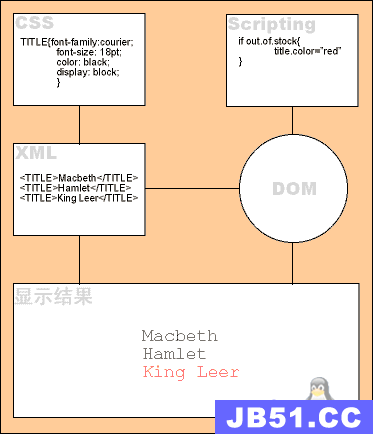Event Observer
<config> <frontend> [1] <events> <catalog_product_load_after> [2] <observers> <yourModule> [3] <type>singleton</type> [4] <class>module/observer</class> [5] <method>catalogProductLoadAfter</method> [6] </yourModule> </observers> </catalog_product_load_after> </events> </frontend> </config>
[1] Area: adminhtml,frontend,oder,global
[2] Event Code
[3] Must be unique within the event observer.
[4] "model" or "singleton"
[5] Your_Class_Name oder module/class
[6] The method to be called on the observer instance.
Rewrite Controllers
<config> <frontend> [1] <routers> <checkout> [2] <args> <modules> <yourModule before="Mage_Checkout">Namespace_Module_Overwrite_Checkout</yourModule> [3] </modules> </args> </checkout> </routers> </frontend> </config>
[1] Depending on the controllers area "frontend" or "admin"
[2] Router node of the module to be overridden (look it up in the config.xml of that module)
[3] The tag <yourModule> can be anything,it must be unique within the <modules> node.
Your_Module_Overwrite_Checkout (is mapped to directory)
Your/Module/controllers/Overwrite/Checkout/
Register Module Controllers
<config> <frontend> [1] <routers> <yourModule> [2] <use>standard</use> [3] <args> <module>Namespace_Module</module> [4] <frontName>yourmod</frontName> [5] </args> </yourModule> </routers> </frontend> </config>
[1] Depending on the controllers area "frontend" or "admin"
[2] Must be unique
[3] "admin" for Adminhtml controllers,otherwise "standard"
[4] Namespace and Name of the Module as defined in the <config><modules> node
[5] The URL part to point to the controller directory (e.g. http://example.com/yourmod)
Magento will look in Namespace/Module/controllers/ for the called controller.
Rewrite a Model/Block/Helper
<config> <global> <models|block|helper> [1] <!-- 被重写module的简称(shorthand) --> <sales> [2] <rewrite> <!-- 被重写类的后缀名 --> <order_item>Namespace_Module_Model_Sales_Order_Item</order_item> [3] </rewrite> </sales> </models|block|helper> </global> </config>
[1] Depending on object type "models","helpers" or "blocks"
[2] Modul shorthand
[3] The tag is the class to override,the content is the full name of the replacement class.
Define a Model / Block / Helper module shorthand
<config> <global> <models> [1] <(shorthand)> [2] <class>Namespace_Module_Model</class> [3] </(shorthand)> </models> <blocks> <(shorthand)> <class>(ClassName_Prefix)</class> </(shorthand)> </blocks> <helpers> <(shorthand)> <class>(ClassName_Prefix)</class> </(shorthand)> </helpers> </global> </config>
[1] Depending on object type "models","helpers" or "blocks"
[2] The module shorthand,must be unique for the module
[3] Classname prefix,will replace the shorthand [2] when resolving a class name.
depends
<config> <modules> <(NameSpace_ModuleName)> <active>[true|false]</active> <codePool>[core|community|local]</codePool> <depends> <(AnotherNameSpace_ModuleName) /> </depends> <version>(version_number)</version> </(NameSpace_ModuleName> </modules> </config>
models
<global>
<models>
<(modulename)>
<class>(ClassName_Prefix)</class>
<resourceModel>(modulename)_(resource_model_type)</resourceModel>
<(modulename)_(resource_model_type)>
<!-- deFinition -->
</(modulename)_(resource_model_type)>
<rewrite><!-- deFinition --></rewrite>
</(modulename)>
</models>
<resources>
<(modulename)_setup><!-- deFinition --></(modulename)_setup>
<(modulename)_read><!-- deFinition --></(modulename)_read>
<(modulename)_write><!-- deFinition --></(modulename)_write>
</resources>
</global>
Setup Resource
<global>
<!-- ... -->
<resources>
<weblog_setup>
<setup>
<module>Magentotutorial_Weblog</module>
<class>Magentotutorial_Weblog_Model_Resource_Setup</class>
</setup>
</weblog_setup>
</resources>
<!-- ... -->
</global>
fieldsets
<global>
<fieldsets>
<(page_handle?)>
<(field_name)>?</(field_name)>
</(page_handle?)>
</fieldsets>
</global>
template
<global>
<template>
<email>
<(email_template_name)
module="(modulename)"
translate="[label][,description]"
>
<!-- deFinition -->
<(/email_template_name)>
</email>
</template>
</global>
events
<global>
<events>
<(event_name)>
<observers>
<class>log/visitor</class>
<method>bindCustomerLogin</method>
</observers>
</(event_name)>
</events>
</global>
cronjob
<config> <crontab> <jobs> <NameSpace_ModuleName> <schedule> <cron_expr>*/6 * * * *</cron_expr> </schedule> <run> <model>NameSpace/ModuleName::cron</model> </run> </NameSpace_ModuleName> </jobs> </crontab> </config>
Layout
<!-- default是一个handle,即在所有页面生效 --> <default> <block type="page/html_head" name="head" as="head"> <!-- add js --> <action method="addJs"><script>prototype/prototype.js</script></action> <!-- add css --> <action method="addCss"><stylesheet>css/styles.css</stylesheet></action> </block> <!-- reference是对已存在的block进行替换 --> <reference name="left"> <block type="catalog/product_compare_sidebar" before="cart_sidebar" name="catalog.compare.sidebar" template="catalog/product/compare/sidebar.phtml"/> </reference> </default> <!-- <[module]_[controller]_[action]> 指定handle的layout --> <catalog_category_default translate="label"> <label>Catalog Category (Non-Anchor)</label> <reference name="root"> <!-- action用来调用一个程序方法 --> <action method="setTemplate"><template>page/2columns-left.phtml</template></action> </reference> </catalog_category_default> <catalog_product_index> <!-- 将使用与catalog_category_default一样的layout,用于一份layout影响多个页面 --> <update handle="catalog_category_default" /> </catelog_product_index>
Layout: block
<!-- "catalog/product_view"的声明方法名为分组类名(Grouped Class Names) catalog会搜索XML的global/blocks/catalog,默认是Mage_Catalog_Block product_view补充后缀为Mage_Catalog_Block_Product_View --> <block type="catalog/product_view" <!-- block的实现代码,决定block中$this的意义 --> name="product.info" <!-- name是layout之中被引用时的唯一标识 --> as="product-info" <!-- 别名 --> template="catalog/product/view.phtml" <!-- 给block套上的template --> after="-" <!-- 顺序,代表在XX block之后 --> output="toHtml" <!--声明用于呈现到页面上的处理函数,toHtml是默认值 --> />
EAV
<global>
<eav_attributes><!-- deFinition --></eav_attributes>
</global>

